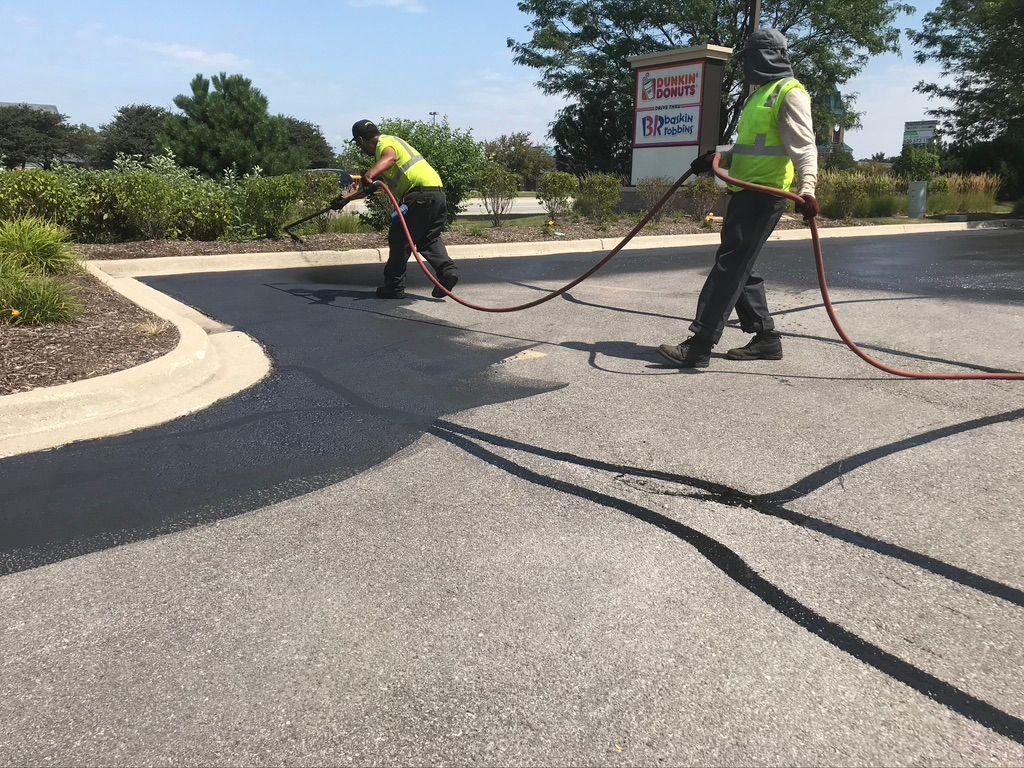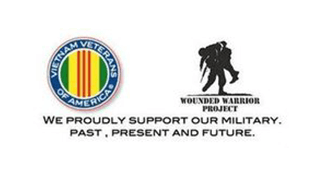Periodic applications of a high-quality asphalt sealant can increase your return on your investment in paving by reducing repair costs and prolonging the life of your pavement. For mere pennies per square foot, sealcoating can block damaging UV rays and automotive fluids as well as enhance the pavement’s appearance. However, sealcoat applications require specific environmental conditions that tend to come together more frequently in the spring, making it the best season for Chicago asphalt sealcoating.
What Are the Ideal Conditions for Chicago Asphalt Sealcoating?
The companies that manufacture sealcoating conduct a great deal of research to determine the best conditions for applying their products. These are the ideal conditions for applying asphalt sealcoating in Chicago.
1. The ground and air temperatures are 70 degrees Fahrenheit.
2. The wind velocity is between 3 mph and 5 mph.
3. The relative humidity is less than 50%.
4. The skies should not be overcast.
However, although there may be days on which all of the above conditions are perfectly aligned, when applying asphalt sealcoating in Chicago, it is more likely that at least one condition will not be ideal. Therefore, an asphalt sealcoating service provider will probably rely on the manufacturer’s specifications for acceptable conditions.
What Are the Acceptable Conditions for Applying Chicago Asphalt Sealcoating?
The simple truth is that there are very few locations in America that consistently meet all of the ideal conditions for asphalt parking lot sealcoating. Manufacturers are aware of this fact, so they provide a list of acceptable conditions.
1. The ground and air temperatures must be at least 50 degrees Fahrenheit at the time the sealcoating contractor begins the application. The temperature should continue to rise throughout the application, and freezing temperatures must not occur for at least 24 hours after application.
2. The wind speed should be a minimum of 3 mph, but it should not exceed approximately 10 mph.
3. The relative humidity should be as low as possible. However, the humidity level should not be greater than 90%.
4. Parking lot sealcoating needs to be exposed to sunlight for at least four hours while it is curing. If the hours of available sunlight are insufficient, contractors may include an additive in the sealcoating mix to expedite the curing process.
Why Are the Environmental Conditions Critical for Successful Chicago Asphalt Sealcoating?
The primary reason contractors worry about the weather when providing asphalt sealcoating services has to do with evaporation rates. Asphalt parking lot sealcoating is up to 70% water, and this water must be evaporated at a steady, timely rate for the sealant to cure properly. As you may know, evaporation rates increase as the temperature rises and decrease as humidity levels rise. Evaporation can increase or decrease with air circulation; a strong wind can expedite evaporation too much, a lack of wind will stall the process, and a slight breeze will help maintain a consistent rate of evaporation. Sunlight helps excite the water molecules in asphalt sealcoating, making them move around faster and more forcefully. This helps them escape the liquid sealcoating. However, in addition to generating heat, sunlight also renews it, which helps keep the rate of evaporation consistent.
What Else Should I Know About Chicago Asphalt Sealcoating?
There are more steps involved to deliver a superior asphalt sealcoating service than many people realize. Some steps must be performed on the day of the application, but your contractor may perform some of them ahead of time. There are also steps that will be needed after the application.
1. Repair the pavement. Potholes and significant cracks need to be repaired before starting the application.
2. Clean the pavement. The pavement cannot have any contaminants that would prevent the sealcoating and the asphalt from forming a strong bond. Contaminants include grass clippings, automotive fluids, dirt, trash, tree sap, dead leaves, and loose gravel.
3. Ensure that the pavement is completely dry. If water was used to clean the pavement, give it time to dry. Turn off the sprinkler system.
4. Prepare the pavement as needed. Patches of polished aggregate, oil stains, and other areas may need a primer to ensure proper bonding of the sealant.
5. Apply two thin coats of sealcoating, allowing each to dry before proceeding.
6. Parking lot sealcoating will obscure the painted pavement markings and lines. After the final coat of sealant has dried, the contractor can repaint the markings and lines.
7. Keep the area closed for the time specified by your Chicago asphalt sealcoating contractor. Typically, you can allow foot traffic in less than eight hours, but you may need to prevent vehicle traffic for up to 24 hours.
If you have additional questions about asphalt sealcoating in Chicago, contact the pros at Black Hawk Paving. We have been serving the Chicagoland area since 1975. In addition to asphalt sealcoating, we offer asphalt paving and resurfacing, asphalt fabric, asphalt patching and repair, asphalt milling and grinding, hot crack sealing, concrete repairs, parking lot striping, concrete flatwork, pavement markings, traffic signage, sewer repair, excavation and grading, car stops, and concrete curbing. We have an exemplary reputation for exceptional service and extraordinary craftsmanship. You can request a free quote by emailing Info@BlackHawkPaving.com, submitting the online form, or calling either 773-378-2390 or 708-479-0400.


